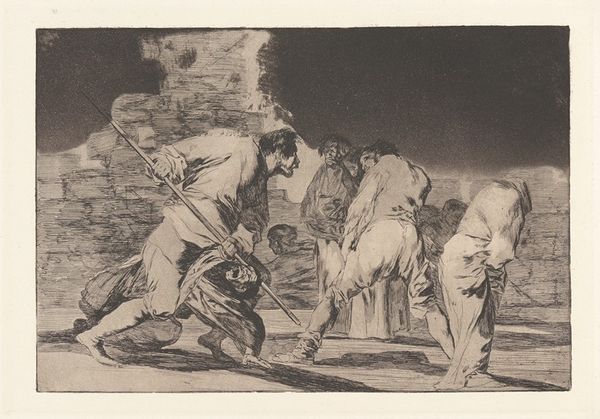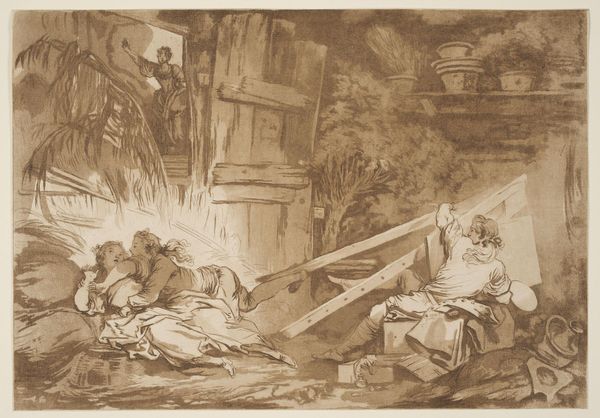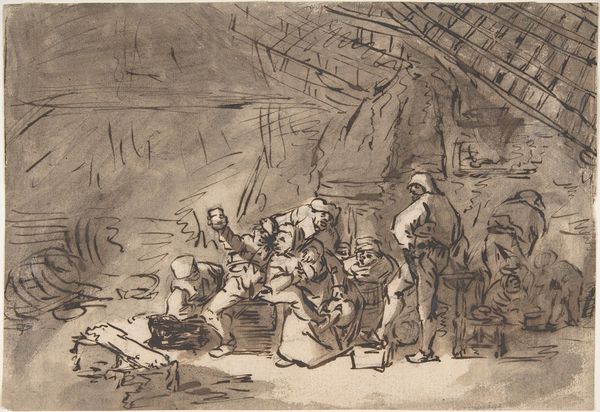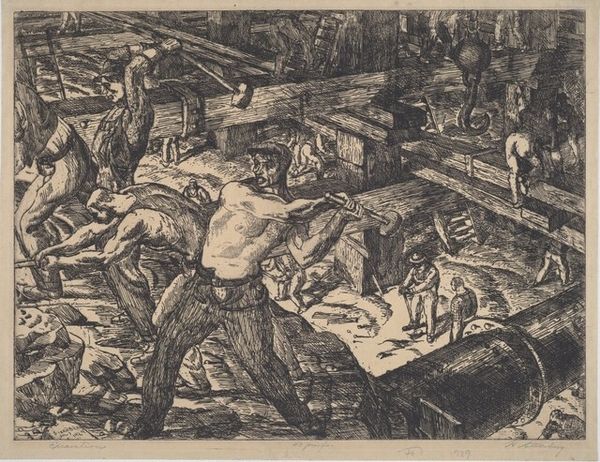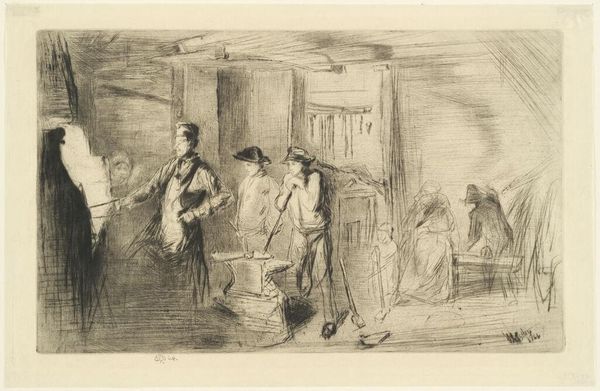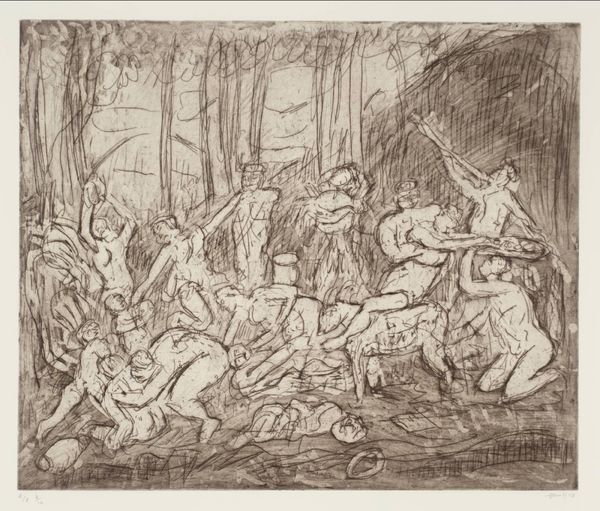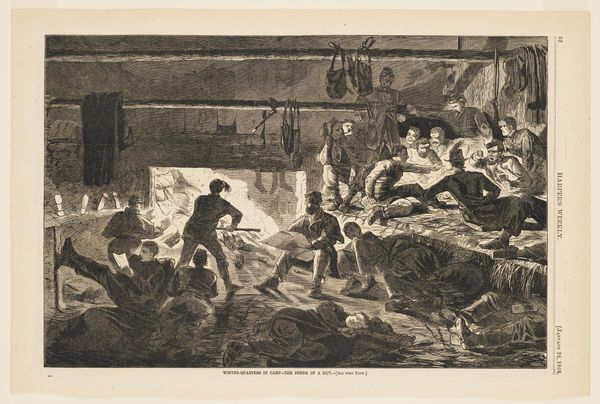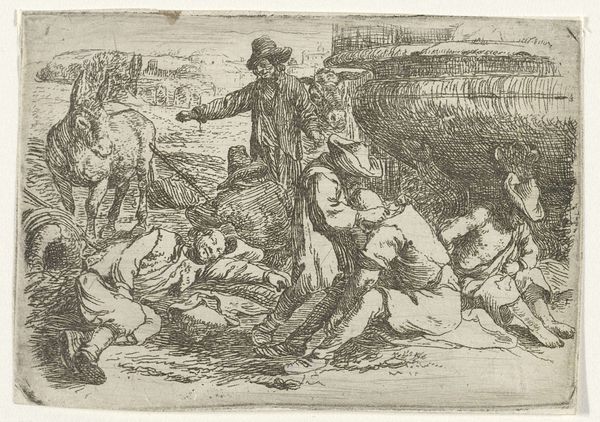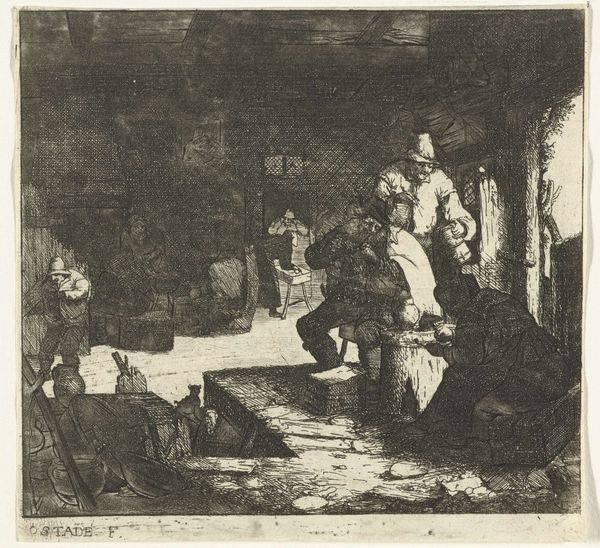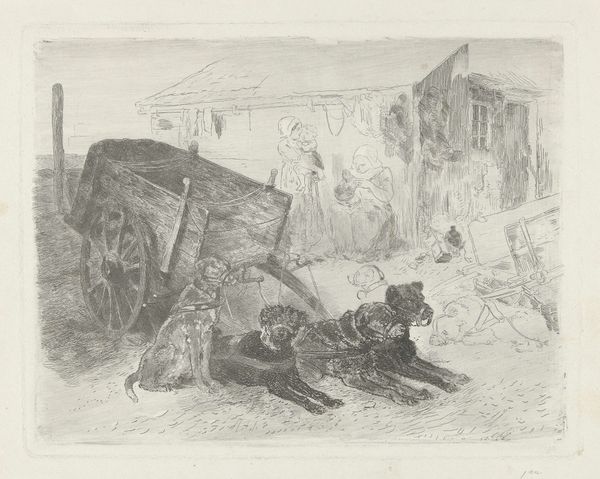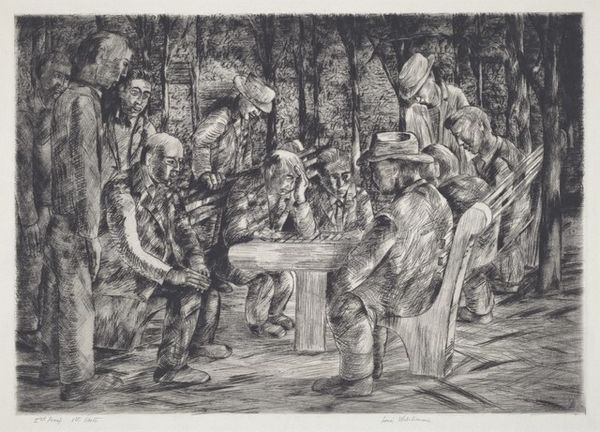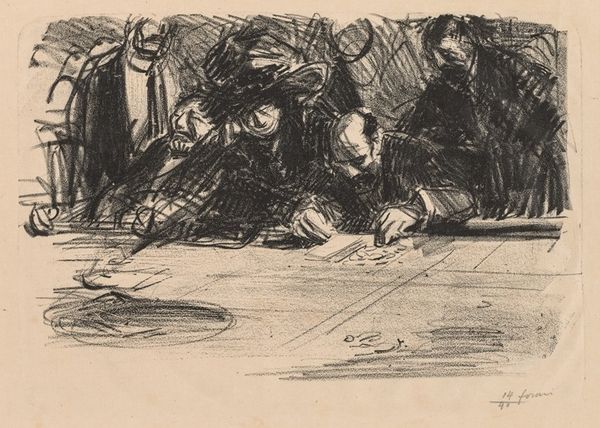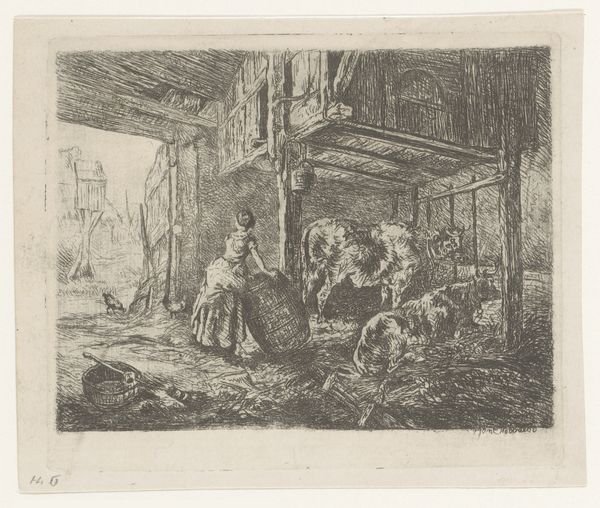
drawing, charcoal
#
drawing
#
landscape
#
cityscape
#
charcoal
Dimensions: overall: 29 x 35.6 cm (11 7/16 x 14 in.)
Copyright: National Gallery of Art: CC0 1.0
Curator: What a striking use of charcoal! There's a subdued and slightly anxious mood, almost like a clandestine gathering about to be discovered. Editor: It's a drawing from around 1928 by George Overbury "Pop" Hart. He titled it "Lewisohn Stadium, New York." Built uptown in 1915, the stadium at City College became a popular venue for summer concerts, especially performances by the New York Philharmonic. Curator: The architecture feels almost Grecian, those stylized pillars in the background remind me of theaters in ancient cultures, spaces meant for community and spectacle, places where citizens gathered to celebrate their civic identities. And the soft tonality from the charcoal reinforces the air of formality that existed within these monumental landmarks. Editor: Exactly. The Lewisohn Stadium served as a democratizing force, bringing classical music and performance to the masses. Hart was often drawn to such public spaces; the stadium for him may have embodied a microcosm of the city itself. You have concert-goers and vendors all thrown together. Curator: Yes, I noticed the blurred figures, they’re barely visible! I see this drawing as symbolic for spectatorship itself. Who are these viewers, and what’s their relation to the artistic act? You can feel that distance from the performers and a clear social division being built, both within the setting itself, but more abstractly by Pop’s use of charcoal. Editor: Absolutely, Hart’s decision to use charcoal, gives the piece an almost documentary feel. The fleeting movements are represented, but he doesn’t idealize his subjects. There is a raw quality to it that you just wouldn’t get with more traditional medium. I suspect his work would've appealed to cultural institutions interested in representing the common people in the interwar years. Curator: That focus on real spaces where shared events unfolded democratically clearly shapes how we receive and perceive imagery over time, it is the cultural memory imbedded in these artistic mediums that shape us! Editor: That’s right, the cultural and historical narrative embedded in the simplest of settings shape collective memory!
Comments
No comments
Be the first to comment and join the conversation on the ultimate creative platform.
